
© Jo Armitage. (Click image for larger version)
DeNada Dance Theatre
Ham and Passion (Jamón y Pasión): Passionaria, Young Man!, O Maria
London, Blue Elephant Theatre
14 October 2015
www.denada-dance.com
www.blueelephanttheatre.co.uk
You certainly don’t have to be Spanish to enjoy Carlos Pons Guerra’s fascinating triple bill of dance theatre, themed with inter-woven strands of flexible gender identity, anti-fascism, Catholicism, ballet legends and a succulent pork leg.
It is, in fact, the jamón – sitting, neatly encased on its stand, with the trotter erect and ever-ready for slicing – that is the show’s constant; the only animal or human entity to appear in all three works. It’s a leit motif with intent, reflecting both the ubiquitous presence of a leg of ham in virtually every Spanish household; and the many linguistic links between jamón y pasión. Vernacular references to eating ham are not always about eating ham, if you know what I mean.
Spain is a proud country, comprising several proud nations. The clamour for autonomy and independence amongst the Basques, Galicians and Catalans is well-documented; but the regional differences in Castilla-La Mancha, Asturias and Madrid are no less notable. The chance of finding a self-respecting flamenco artist who will admit to coming from anywhere other than Andalusia is probably the proverbial needle in a haystack. But, if anything unites Spain, it’s certainly not football, but ham and passion.
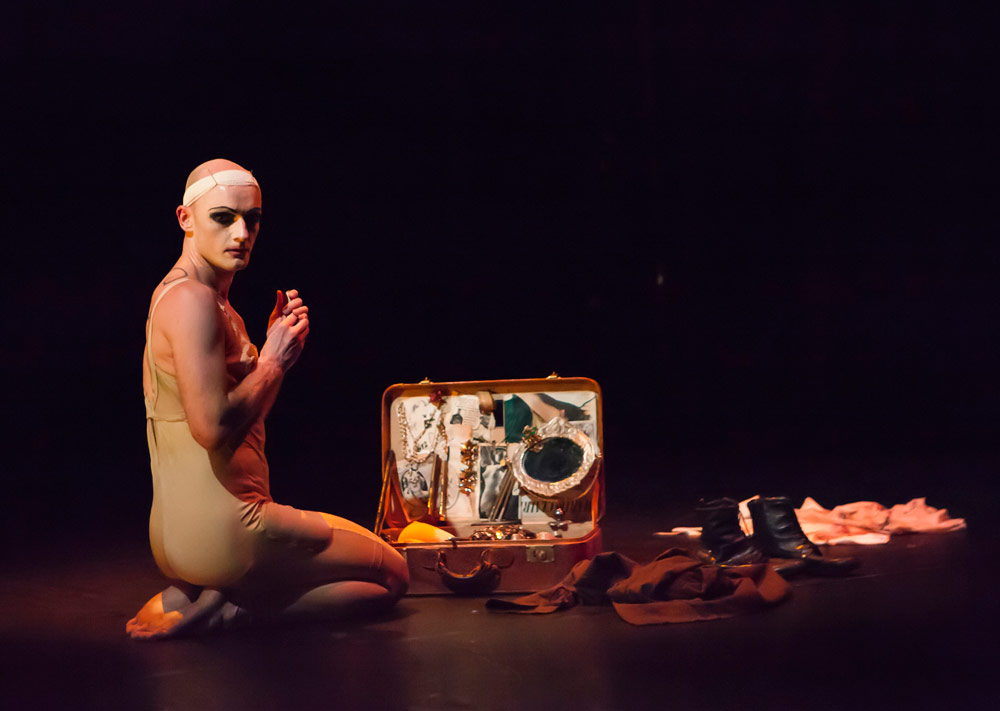
© Maria Falconer. (Click image for larger version)
Multi-faceted, flexible gender identity is a major thread throughout the programme. Ignoring the ham for a moment, three exceptional dance artists appear in the triple bill (very neatly, each are in two of the pieces), Phil Sanger (well remembered for his excellent work with Phoenix Dance Theatre and Jenni Wren’s Slanjayvah Danza) is normally the most masculine of dancers, but here he appears as both a dishevelled drag artiste and the Virgin Mary; and both female dancers – more of whom anon – appear as guys; and, in at least one instance, replace a male dancer from an earlier cast. The promotional leaflet for the show promises a ‘gender-bending’ evening; I see it more as a case of achieving the ultimate diversity where gender has become unimportant.
Themes of anti-fascism and Catholicism dominate the opening and closing panels of this dance triptych. Passionaria is a 22-minute solo for Sanger, as Anna La Passionaria, a drag artiste known as the ‘pearl of downtown Barcelona’. Crucially, it is set in 1939, the year in which Franco’s Nationalist forces captured the Catalan capital as the Spanish Civil War rumbled to its inevitable conclusion.

© Maria Falconer. (Click image for larger version)
Franco and drag acts were not a marriage made in heaven and it is likely that the fictional Passionaria would have been the last of an endangered profession. We see “her” backstage with a trunk full of make-up and clothes, dressed in a satin, floral robe, perhaps reminiscing over past performances, while fully conscious of the reprisals to come. The ham and a long-bladed knife, covered in blood, are her other props. Has she killed someone? Will she kill herself? Or, will she eat some ham? We never really know the outcome but I suspect that there were clues in the accompanying score of Manuel de Falla’s El Amor Brujo (literally, The Bewitched Love), which was composed for a ballet – about unrequited love and ghostly hauntings – during the First World War.
The work reminded me muchly of Alain Platel’s Gardenia, which was inspired by the closing of a transvestite cabaret in Barcelona and performed by retired drag artistes. But, there was nothing vaguely derivative about this mysterious, sparkling new work. Sanger, by the way, was superb in his absorption of the title character. It’s a shame that the cabaret of Platel’s inspiration has closed, because there would surely be a job there for Phil!
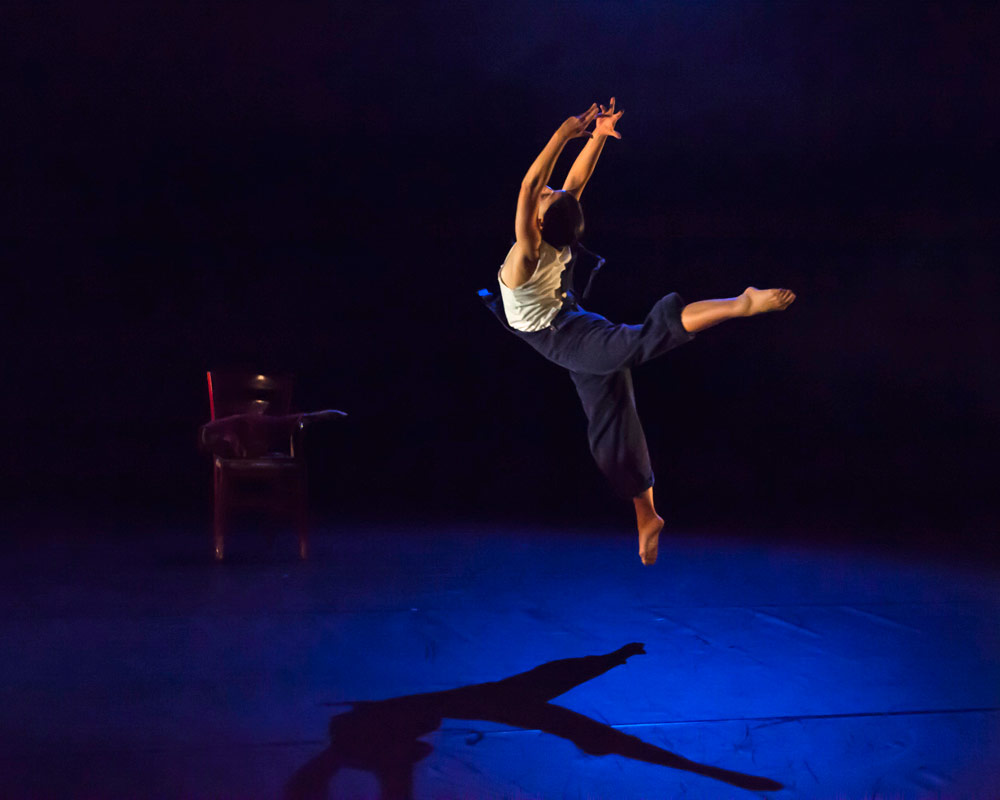
© Maria Falconer. (Click image for larger version)
I had seen the “ham in the sandwich” performance before, catching an early iteration of Young Man! at the GOlive Festival above The Lion and Unicorn pub in Kentish Town, exactly two years’ ago. It is a clever Spanish interpretation of Roland Petit’s Le Jeune Homme et la Mort but with an important touch of gender reversal. The young man of the title is played by a girl – in this case, the captivating presence of Azzurra Ardovini – who spent the opening section, angrily and unhappily alone in a dingy room. As in Petit’s original, she is eventually joined by a seductress – androgynously portrayed by Marivi Da Silva – and they dance a long and intensely physical duet, liberally infused with sexual tension. Not only the jamón’s trotter but also a phallic chorizo sausage become their instruments of lust as they get hotter than a pair of horny butcher’s dogs.

© Maria Falconer. (Click image for larger version)
If you are familiar with Le Jeune Homme et la Mort then it may be tempting to imagine that the omission of “the death” from Pons Guerra’s title might have led to a happier ending. But, not so; instead of leading the young man up the stairs to a Paris rooftop for a suicide by hanging, this interloping seductress does it with a shot of heroin. The closure of “her” motorcycle helmet visor referencing a skull completed this 360° adaptation. It’s a very clever and intensely sensual piece; but possibly not for vegetarians.
O Maria is set in the kitchen, where virtually all family life, across southern Europe, takes place. The image of the Virgin Mary is channelled into the Sevillana home of an unhappy couple (Ardovini and Da Silva) who are (quite literally) bound together by societal and religious convention. Their abusive, sado-masochistic interaction is softened and eased by the surprising emergence of Sanger’s Holy Mother from under a pile of clothes on the kitchen floor. He appears to channel a variant interpretation of Deborah Kerr’s Sister Superior act from Black Narcissus into Our Lady. He must be the only man to have played a drag artiste and the Virgin Mary on the same show!
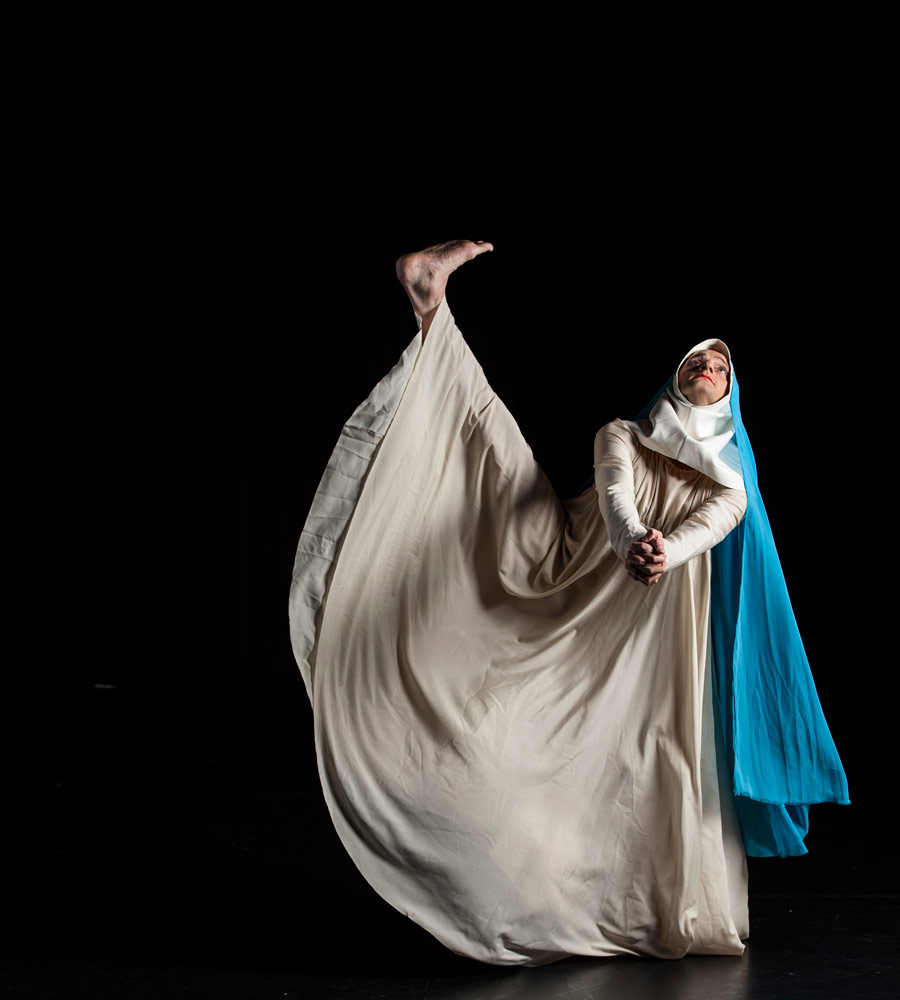
© Jo Armitage. (Click image for larger version)
Both Young Man! and O Maria have an eclectic, largely Spanish soundtrack, featuring a range of vintage songs by dead Spanish actresses and singers, including Sara Montiel, Lolita Sevilla, Marifé de Triana and Lola Flores. I’m sure that there were many clever references in these song lyrics that would have passed me by but I do know that Montiel (most famous for her song Quizás, Quizás, Quizás, which is featured in O Maria) was portrayed in the Pedro Almodóvar film Bad Education, and played by a male actor in drag!
The whole programme comprises just over an hour of dance but there is as much to absorb as in an Almodóvar movie. Each work is replete with a multitude of clever ideas, references and imagery; and each is superbly enacted by this trio of charismatic performers.
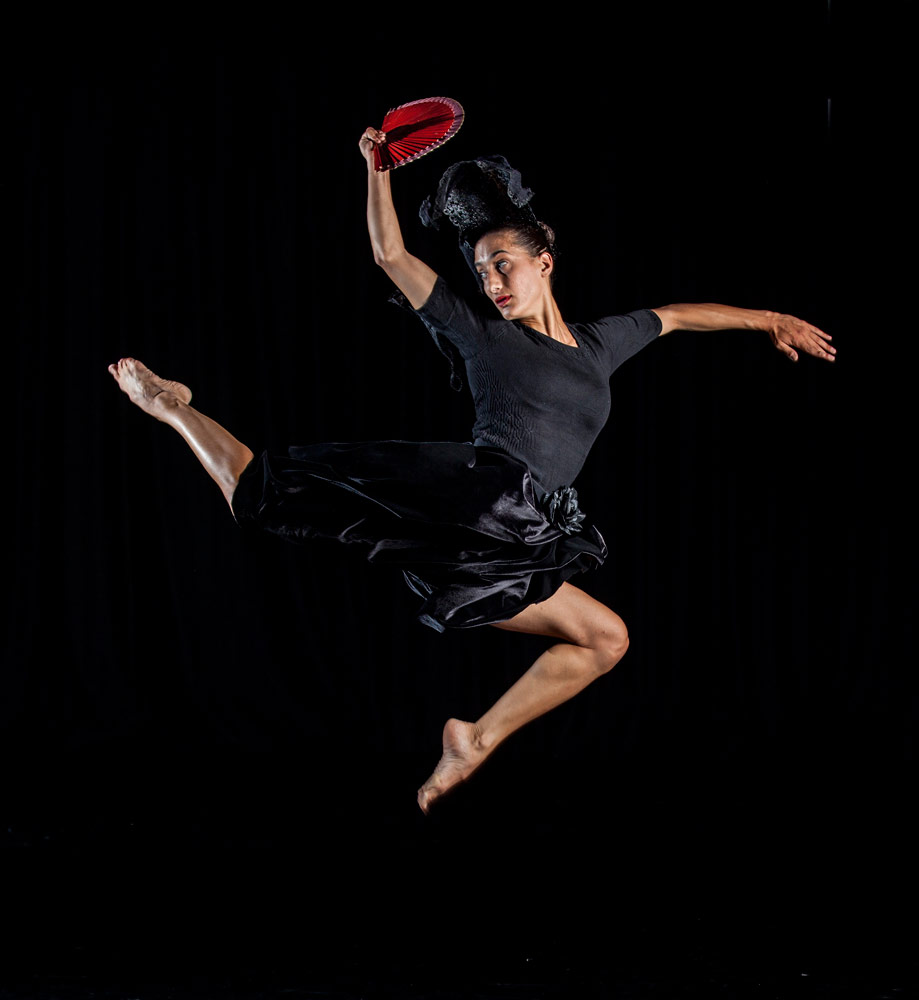
© Jo Armitage. (Click image for larger version)
The link between eroticism and food is certainly not new to Spanish culture. One only needs to reference the many such metaphors in the 1992 film with a similar name – Bigas Lunas’ Jamón Jamón. At the end of that film, the two suitors for Penelope Cruz’s character beat each other with haunches of ham. It just goes to show that there are no new ideas; but here, the Spanish desire for ham and passion is cleverly and entertainingly repackaged.












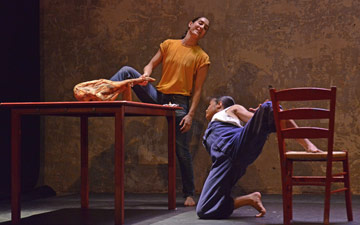
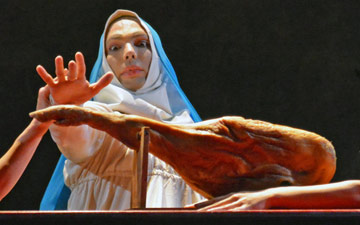
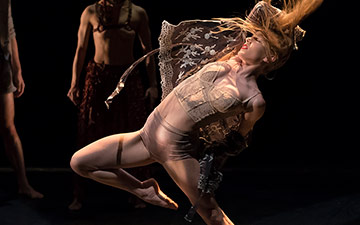
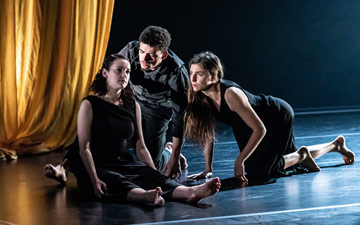

You must be logged in to post a comment.